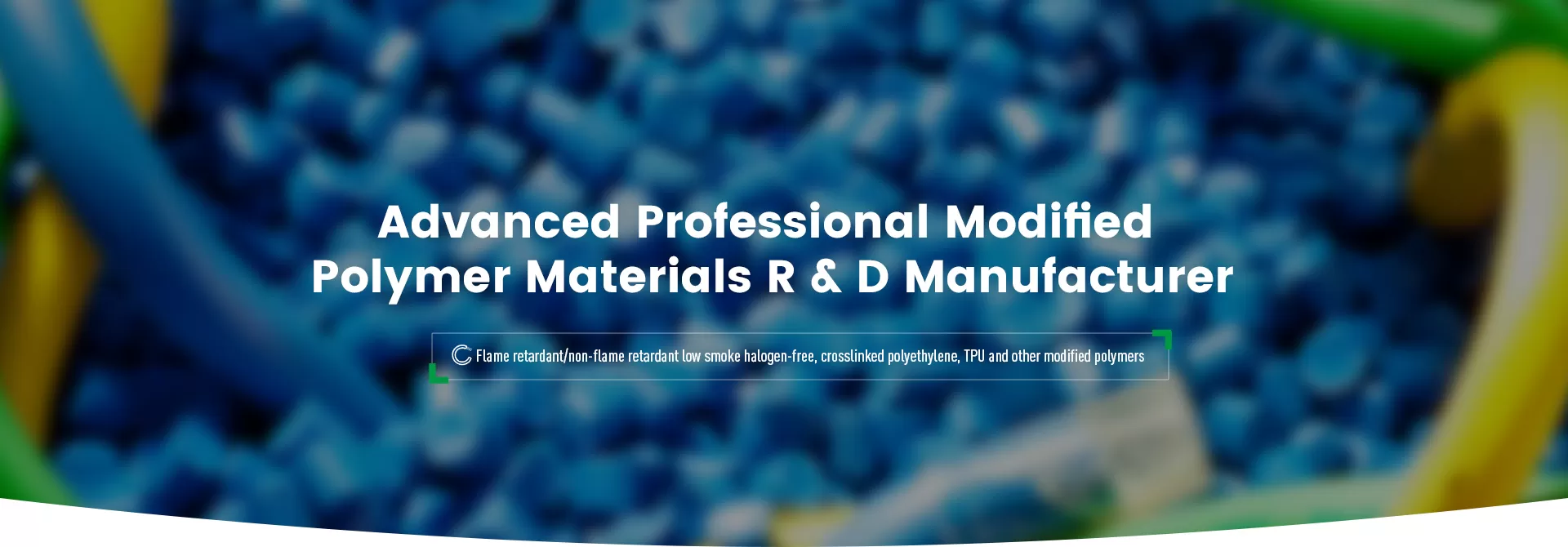
Thermoplastic elastomers (TPEs) have become a leading choice across multiple industries due to their unique combination of rubber-like elasticity and plastic-like processability. This material merges the advantages of traditional thermoplastics with the performance characteristics of rubber, making it an ideal candidate for many applications, including cable manufacturing.
Thermoplastic elastomer (TPE) is a class of materials that possess both thermoplastic and elastomeric properties. These materials can be repeatedly melted and molded, allowing for efficient manufacturing processes. TPEs are composed of polymer segments that provide elasticity and hard segments that contribute tostrength and stability.
TPEs can be classified into several types, including:
Styrenic Block Copolymers (SBCs): Known for their excellent elasticity and processability, SBCs are widely used in various applications, including cable jackets.
Thermoplastic Polyurethanes (TPUs): These materials offer high abrasion resistance and are often used in applications that require durability.
Thermoplastic Olefins (TPOs): Known for their weather resistance and low-temperature flexibility, TPOs are commonly used in automotive and cable applications.
One of the standout features of TPE material is its exceptional elasticity. TPE can stretch to significant lengths without permanent deformation, making it ideal for cable manufacturing where flexibility is essential. This elasticity is crucial because TPE cables must endure bending and twisting without compromising performance.
TPEs exhibit excellent chemical resistance, allowing them to withstand exposure to oils, greases, and various chemicals. This property is particularly important for cables used in harsh environments, such as automotive or industrial applications, where exposure to such substances is common.
TPE materials can maintain their performance in high-temperature environments, making them suitable for applications requiring thermal stability. This capability ensures that TPE cables remain functional in environments with temperature fluctuations, enhancing their reliability and longevity.
The insulating properties of TPE material are another reason for its popularity in cable applications. TPE effectively prevents electrical leakage and provides safety in various electrical applications. The ability to maintain insulating characteristics under stress is vital for ensuring the safety and efficiency of electrical systems.
TPE provides excellent flexibility and toughness across a wide range of temperatures. This property is critical for cables that may be subjected to dynamic movements and environmental changes.
TPE materials demonstrate excellent resistance to oils, solvents, and various chemicals. This characteristic is especially important in industrial environments where cables are frequently exposed to harsh substances.
As a thermoplastic material, TPE is recyclable, making it a more sustainable choice than traditional rubber materials. This aligns with the growing demand for eco-friendly products worldwide.
TPE can be efficiently processed using standard plastic manufacturing techniques, such as injection molding and extrusion, allowing for the production of complex cable designs without sacrificing quality.
While the initial cost of TPE may be higher than some alternatives, its durability and performance often lead to lower lifecycle costs, making it a wise long-term investment.
TPE cable materials designed for cable applications offer a range of enhanced performance and safety benefits:
TPE material is an excellent insulating material, effectively protecting cables from electric shocks and ensuring safety in high-voltage applications.
TPE cable materials can resist UV rays, ozone, and extreme temperatures, making them ideal for outdoor cables and installations.
Many TPE cable material formulations can be designed to meet stringent flame-retardant standards, which is crucial for compliance across industries.
TPE cable materials can maintain their original shape and performance even under prolonged compression, making them more reliable for long-term applications.
TPE cable materials are widely used in various automotive wiring harnesses, increasingly favored for their flexibility, lightweight characteristics, and resistance to environmental factors.
Currently, around 30% of the materials used in charging station cables are TPE.
TPE is commonly used to manufacture cables for consumer electronics, such as phone chargers, headphone cables, data cables, and chargers, thanks to its durability, soft touch, and aesthetic appeal.
TPE materials are favored for their wear resistance, chemical resistance, and ability to withstand extreme temperatures, ensuring reliable operation in industrial environments.
TPE materials play a crucial role in medical applications due to their excellent biocompatibility and antibacterial properties, widely used in various medical cables connecting equipment.
TPE is also widely used in information transmission cables, providing the necessary durability and flexibility for outdoor and underground installations.
PVC is often chosen for its cost-effectiveness, but TPE offers greater flexibility, lower toxicity, and better environmental performance, making it advantageous for many applications.
While traditional rubber provides excellent elasticity, TPE materials are lighter and easier to process, giving them a competitive edge in mass production.
Silicone excels in high-temperature applications and offers exceptional flexibility; however, TPE is more versatile and cost-effective in a broader range of applications, particularly where specific electrical properties are required.
| TPE Cable Material | ||
| Features | Advantages | Application in cables |
| Excellent elasticity | Flexibility and durability | Automotive cables |
| Chemical resistance | Excellent chemical resistance | Charging pile cables |
| High temperature resistance | Environmentally friendly | Consumer electronics cables |
| Insulation properties | Excellent processing properties | Industrial equipment cables |
| High flame retardancy | Cost-effective | Medical equipment cables |
| \ | \ | Information transmission cables |